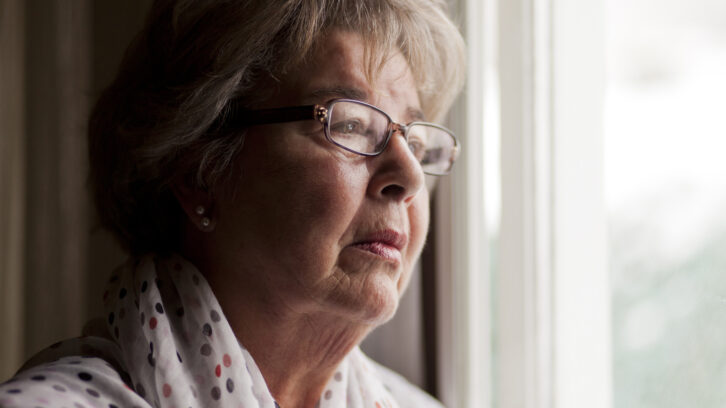Reducing Loneliness for Healthy Ageing
Loneliness and its effects on wellbeing have gotten a lot of attention lately because of the COVID-19 pandemic and restrictions on social interactions. But what do scientists know about loneliness and its risks?

By Tara Keck, Professor of Neuroscience
Loneliness can be used to describe many different feelings and situations. Scientists generally think about loneliness as having two linked components. The first is ’emotional loneliness’1, which occurs when a person lacks close relationships and confidants. In other words, Do you have strong relationships with people who support you? Are there people that you can talk to when you’re feeling good or bad?
The second component is called ‘Social loneliness’2, which occurs when a person lacks an extensive social network. Here the main question is, Do you have enough social interactions and do you generally feel like a part of the community? This component reflects our more casual interactions, like friendly talks with people you encounter in your day-to-day life. Even though these interactions are less deep, they help us feel like we belong to our communities.
Of course, these two different measures are often related to each other for individuals, but changes that occur during ageing may affect one area more than another. For example, having close family members or friends move away or die may more strongly affect emotional loneliness. On the other hand, retirement would reduce the number of casual social interactions that you have at work, while an illness that affects mobility may make it harder to attend regular social events. Both of these would have a bigger effect on social loneliness. Some life events can affect both. For example, hearing loss may reduce your ability to understand others, which could affect the closeness of your relationships. It may also make casual social interactions more difficult and make you more likely to avoid these situations.
Both components of loneliness are important for healthy ageing, but they pose different critical risks for health and well-being. A lack of quality social relationships is linked to increases in cardiovascular disease3 and depression4, and is a risk factor for dementia5. A reduced social network has been shown to have increase mortality and decrease life span in older people. It may seem surprising, but the effects of loneliness are just as strong as those of smoking, obesity, and physical inactivity6. So, it’s really important to maintain strong emotional and social relationships.
How much social interaction is ideal to combat loneliness? There isn’t one right answer because it depends on how often you feel lonely. If you do feel lonely, you aren’t alone. In a recent study we conducted7, more than 75% of older people reported that they often feel lonely. This high level of reported loneliness in older people is consistent with reports from many countries.
What can you do if you are feeling lonely? Unfortunately, there are not yet a lot of scientifically tested approaches to address loneliness. We’re in the process of running a survey to help us develop ways to overcome loneliness, particularly in older people. In the meantime, there are a few steps you can take to figure out what type of loneliness you are experiencing. To test out whether you are feeling socially or emotionally lonely, you can make an effort to have a few more social engagements, either group meetups or one-on-ones (in a pandemic-safe way of course). If more social interactions are not helping, then you might need to work on developing deeper relationships.
The key point to remember is that social interactions are a critical part of our well-being and should be considered as important as our diet and exercise. Making sure we have regular social interactions, even if they have to be virtual, is key for maintaining our health as we age.
- Masi et al., 2011
- Domenech-Abella et al., 2017
- Knox and Uvnas-Modberg, Psychol Bull, 1998; Yang et al., Proc Natl Acad Sci, 2016
- Santini et al., J Affect Disord, 2015
- Livingston et al., The Lancet, 2017
- Holt-Lundstad et al., PLoS Medicine, 2010
- UNFPA, PPH and UCL, UNFPA Bosnia and Herzegovina, 2020